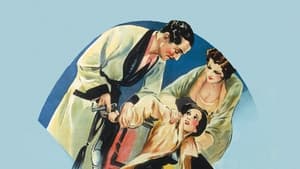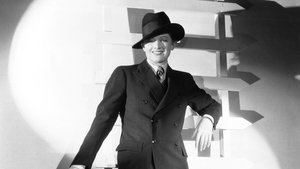Contact: info@alwanfilm.com
Video Sources 0 Views
- Watch trailer
- The Thin Man 1934 Colorized


Synopsis
Table of Contents
ToggleThe Thin Man 1934 Colorized Review: A Classic Noir Revisited in Color

Introduction
Among the classics of 1930s cinema, The Thin Man (1934) occupies a unique position as a quintessential example of the pre-Code Hollywood era’s blend of mystery, humor, and romance. Directed by W.S. Van Dyke and based on the novel by Dashiell Hammett, this film has remained a beloved staple of the detective genre. While the original release was in black and white, the subsequent colorization of The Thin Man provides an intriguing opportunity to reassess its impact and aesthetic appeal through a modern lens. In this review, we will explore the significance of The Thin Man (1934), examine how the colorized version alters the viewing experience, and discuss its place in the broader context of film history.
Check The Full Colorized Movies List
Check Our Colorized Movies Trailer Channel
Understanding The Thin Man 1934 Colorized: Director, Cast, and Genre
Director’s Vision
W.S. Van Dyke, also known as “One Take Woody” for his efficient and effective shooting style, directed The Thin Man (1934). Van Dyke’s vision for the film was to create a stylish, witty, and fast-paced detective story that would captivate audiences and keep them guessing until the very end. His direction effectively balances the film’s suspenseful plot with its lighthearted, comedic elements, making it a standout in the genre.
Van Dyke’s ability to manage the film’s pacing and maintain a sharp sense of humor contributed significantly to its success. His work on The Thin Man helped establish a template for future detective films, blending intrigue with charm and wit.
The Iconic Performance of Actors
The standout performances in The Thin Man (1934) come from its leading actors, William Powell and Myrna Loy. Powell plays Nick Charles, a retired detective who is drawn back into the world of crime-solving by a mysterious case. Powell’s portrayal of Nick is both suave and clever, perfectly capturing the character’s charisma and intellect.
Myrna Loy stars as Nora Charles, Nick’s witty and supportive wife. Loy’s performance adds a layer of charm and sophistication to the film, creating a dynamic and engaging partnership with Powell. Together, Powell and Loy deliver a memorable on-screen chemistry that has become one of the film’s defining features.
Exploring the Genre
The Thin Man (1934) is a prime example of the detective genre, specifically the “whodunit” subgenre. The film combines elements of mystery, crime, and comedy, setting itself apart from other detective stories of the time. Its clever plot, witty dialogue, and the charismatic interplay between the lead characters make it a classic example of 1930s cinema.
The film’s genre also reflects the influence of the pre-Code era, a period characterized by more relaxed censorship and a willingness to explore themes of crime and romance in a more sophisticated manner. The Thin Man captures the essence of this era with its engaging plot and sharp dialogue.
Exploring the World of The Thin Man 1934 Colorized: Plot and Characters
Detailed Synopsis
The Thin Man (1934) begins with retired detective Nick Charles (William Powell) and his wife Nora (Myrna Loy) returning to New York City for the holidays. Their quiet life is disrupted when they become involved in the investigation of a missing person case. The missing person is a wealthy inventor named Clyde Wynant, who disappeared under mysterious circumstances.
As Nick and Nora delve into the case, they encounter a colorful cast of characters, including Wynant’s estranged family and associates, each with their own motives and secrets. The investigation leads to a series of twists and turns, culminating in a dramatic and surprising conclusion.
Key moments in the film include Nick and Nora’s witty banter, the unveiling of hidden motives, and the clever resolution of the mystery. The film’s blend of suspense and humor keeps the audience engaged and entertained throughout.
The Complex Protagonist and Memorable Supporting Characters
Nick Charles, portrayed by William Powell, is a quintessential detective character with a sharp mind and a knack for solving complex cases. His interactions with Nora and the various suspects add depth to the story, making him a memorable and engaging protagonist.
Nora Charles, played by Myrna Loy, is a strong and independent character who supports Nick throughout the investigation. Her witty remarks and supportive nature contribute to the film’s charm and sophistication.
The supporting characters, including the various suspects and witnesses, add complexity to the story and provide additional layers of intrigue. Each character’s distinct personality and motivations contribute to the film’s overall appeal.
The Art of Film Colorization
Understanding the Process
Film colorization involves adding color to black-and-white films, either manually or digitally. Early colorization techniques were labor-intensive, requiring artists to paint each frame individually. In recent years, digital colorization has become the preferred method, allowing for more precise and efficient color application.
The colorization of The Thin Man (1934) involved digitally adding color to the original black-and-white footage. The goal was to enhance the visual experience while preserving the film’s original aesthetic. This process required careful consideration of historical accuracy and artistic intent.
Development Over Time
Colorization technology has advanced significantly since the early days. Early attempts at colorizing films were met with mixed reactions, but improvements in technology have made the process more effective and widely accepted. Today, colorization is seen as a way to reintroduce classic films to new audiences, offering a fresh perspective on beloved favorites.
The colorization of The Thin Man represents an opportunity to experience the film in a new light, providing a different visual experience from the original black-and-white release.
Early Colored Films: A Brief History
Emergence of Early Colored Techniques
The history of colorized cinema began with experimental techniques such as tinting and toning, which added color to specific parts of a film or adjusted the overall color balance. These early methods provided limited color experiences and were often used to enhance key scenes.
The introduction of Technicolor in the 1930s marked a significant advancement in color film technology. Technicolor involved using multiple film strips to capture and project color images, resulting in vibrant and realistic colors. This technology revolutionized filmmaking and paved the way for more sophisticated colorization techniques.
The Thin Man 1934 and Its Early Colored Version
The Decision to Release in Color
The decision to release The Thin Man (1934) in a colorized format was driven by a desire to provide a modern viewing experience and attract new audiences. By adding color to the film, the creators aimed to enhance its visual appeal and offer a fresh perspective on a classic work.
The colorized version of The Thin Man provides an opportunity to revisit the film with a new appreciation for its visual elements, including costumes, sets, and cinematography. The addition of color offers a different way to experience the film and may reveal details that were less noticeable in the original black-and-white release.
Impact on the Visual Narrative
The colorization of The Thin Man (1934) adds a layer of visual richness that can enhance the viewer’s appreciation of the film. The vibrant colors bring out details in the film’s settings and costumes, providing a more immersive experience.
However, the colorization also raises questions about how it alters the film’s original artistic intent. Some viewers may find that the added colors enhance their enjoyment of the film, while others may prefer the classic black-and-white version for its historical and aesthetic authenticity.
The Debate Over Film Colorization
Controversy Surrounding Colorization
The colorization of black-and-white films has been a contentious issue among filmmakers and film enthusiasts. Critics argue that colorization can compromise the artistic integrity of classic films, as the original filmmakers intended their works to be experienced in black and white. Concerns also arise about the accuracy of colorization and the potential for historical inaccuracies.
Proponents of colorization, however, argue that it can rejuvenate classic films and make them more accessible to contemporary audiences. By enhancing the visual appeal, colorization can attract new viewers and provide a different perspective on beloved classics.
Examining The Thin Man 1934 as an Early Colored Film
Enhancement or Distraction?
The colorization of The Thin Man (1934) provides a unique opportunity to assess how color can affect the viewing experience. On one hand, the colorized version adds a layer of vibrancy and detail that can enhance the film’s visual appeal. The colors bring out nuances in the costumes and sets, offering a fresh perspective on the film’s aesthetic.
On the other hand, the colorization may alter the film’s original mood and tone. Some viewers may prefer the classic black-and-white version for its historical authenticity and the way it aligns with the film’s original artistic vision. The effectiveness of colorization ultimately depends on individual preferences and expectations.
Influence and Legacy: The Thin Man 1934 Colorized’s Impact on Cinema
The Detective Genre and Beyond
The Thin Man (1934) had a significant impact on the detective genre, setting a standard for future films in the genre. The film’s clever plot, witty dialogue, and charismatic lead characters influenced subsequent detective stories and helped shape the genre’s evolution.
The success of The Thin Man also contributed to the popularity of the “whodunit” subgenre, inspiring a series of sequels and adaptations. The film’s blend of mystery and humor became a defining feature of the genre and continues to be appreciated by audiences and critics alike.
Director’s Cinematic Legacy: Beyond The Thin Man 1934 Colorized
W.S. Van Dyke’s Influence
W.S. Van Dyke’s career extended beyond The Thin Man (1934), encompassing a range of successful films that showcased his directorial skills and versatility. Van Dyke is known for his work on films such as San Francisco (1936) and The Hurricane (1937), both of which demonstrated his ability to handle diverse genres and complex storytelling.
Van Dyke’s influence on filmmaking is evident in his innovative techniques and his ability to create engaging and entertaining films. His work on The Thin Man remains a testament to his skillful direction and his impact on the development of the detective genre.
Themes Explored in The Thin Man 1934 Colorized
Wit, Romance, and Intrigue
The Thin Man (1934) explores themes of wit, romance, and intrigue within the context of a detective story. The film’s dialogue is filled with clever remarks and humorous exchanges, adding a layer of sophistication and charm to the narrative.
The romance between Nick and Nora Charles is a central theme, with their playful banter and mutual support contributing to the film’s appeal. The film also delves into the intricacies of the mystery, with its plot twists and surprising revelations adding depth to the story.
Reception and Controversy Surrounding The Thin Man 1934 Colorized
Initial Reviews and Audience Reactions
Upon its release, The Thin Man (1934) received widespread acclaim for its engaging plot, sharp dialogue, and charismatic performances. Critics praised William Powell and Myrna Loy for their dynamic chemistry and their ability to bring charm and sophistication to the film.
The colorization of the film has sparked some controversy, with critics and purists expressing concerns about the potential impact on the film’s original artistic vision. Despite these concerns, the colorized version has been well-received by audiences who appreciate the enhanced visual experience.
Where to Watch The Thin Man 1934 Colorized Online
For those interested in experiencing The Thin Man (1934), several streaming platforms offer access to both the original black-and-white version and the colorized release. Popular services such as Amazon Prime Video and Turner Classic Movies provide options for viewing the film online. Additionally, DVD and Blu-ray versions, including colorized editions, are available for purchase.
FAQs About The Thin Man 1934 Colorized
Q: What is the significance of the colorized version of The Thin Man (1934)?
A: The colorized version of The Thin Man (1934) offers a modern perspective on the film, enhancing its visual appeal and providing a new way to experience the classic detective story.
Q: Who directed The Thin Man (1934)?
A: The Thin Man (1934) was directed by W.S. Van Dyke, known for his efficient and effective directing style.
Q: What themes are explored in The Thin Man (1934)?
A: The film explores themes of wit, romance, and intrigue, blending clever dialogue and a sophisticated romance with a compelling detective mystery.
Q: How has The Thin Man (1934) influenced the detective genre?
A: The Thin Man (1934) has had a lasting impact on the detective genre, setting a standard for future films and inspiring a series of sequels and adaptations.
Conclusion
The Thin Man (1934) remains a classic of early 20th-century cinema, celebrated for its clever storytelling, charismatic performances, and its unique blend of mystery and humor. The colorization of the film offers a new perspective, enhancing its visual appeal and providing a fresh experience for modern audiences. Whether viewed in its original black-and-white format or the colorized version, The Thin Man continues to captivate and entertain, standing as a testament to the enduring legacy of classic detective cinema.




















